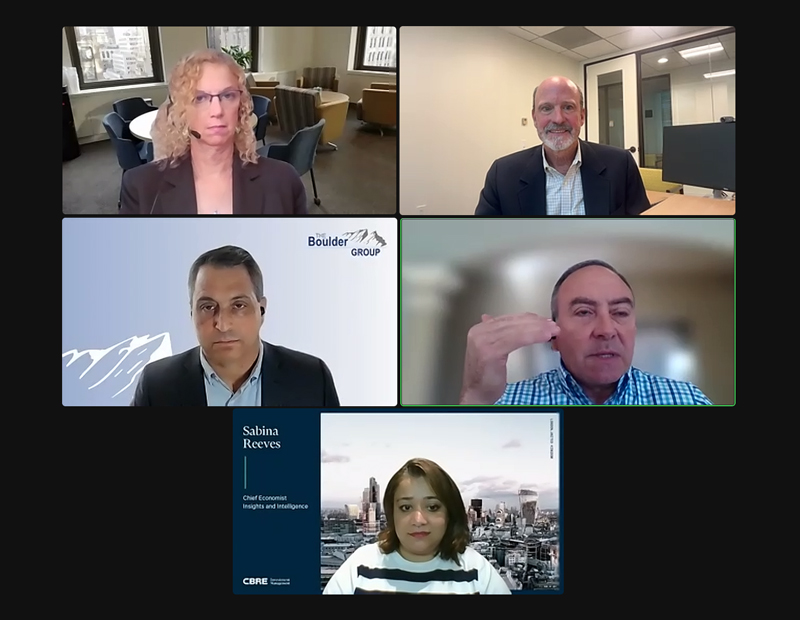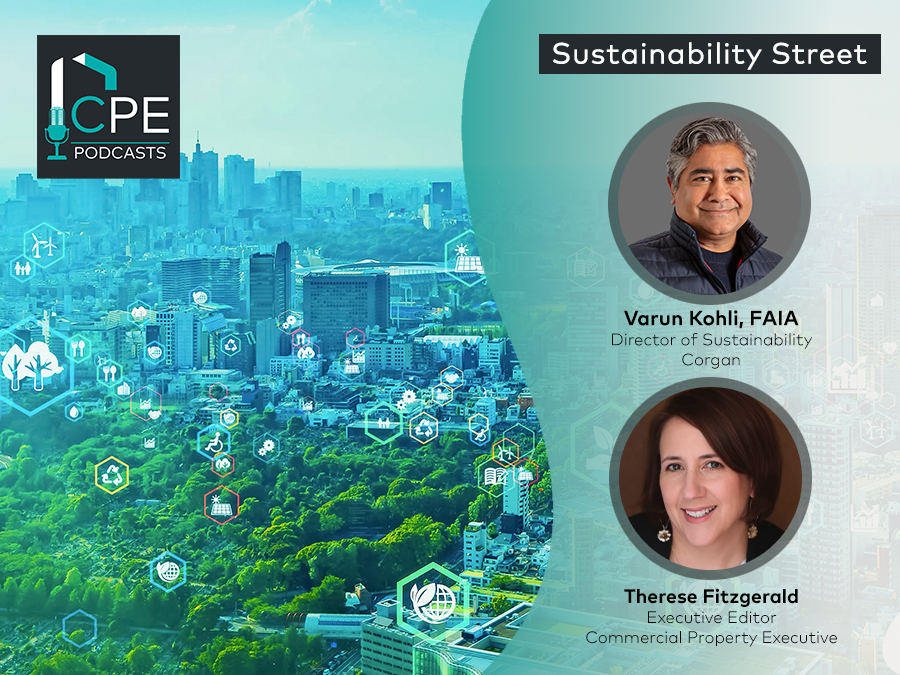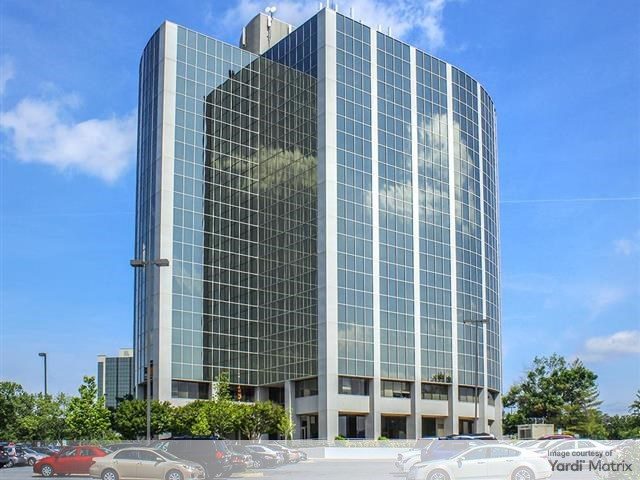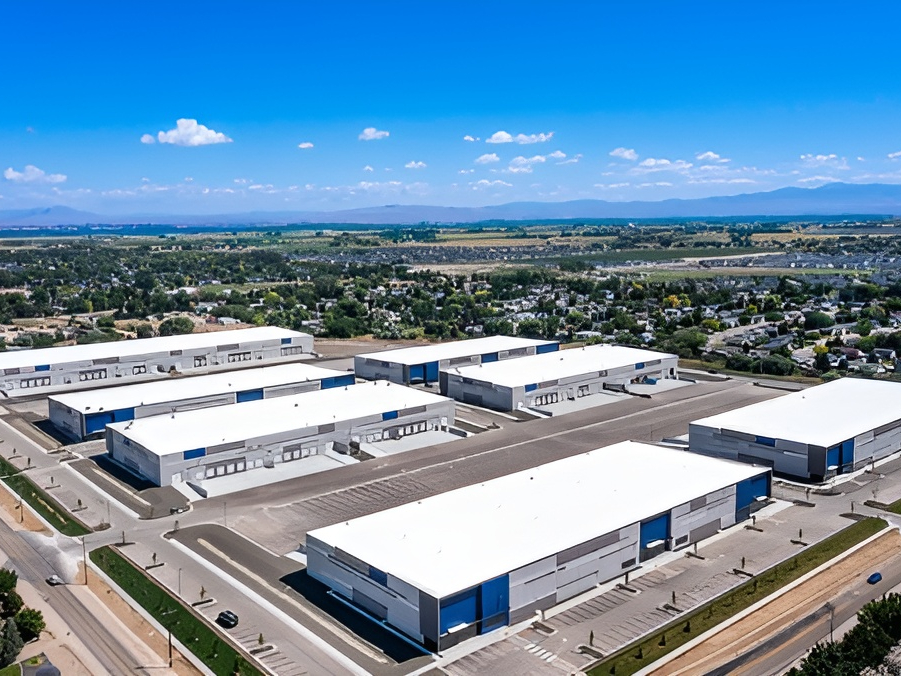2024 Forecast: More of the Same?
The industry faces multiple challenges, but there are opportunities for savvy investors, panelists said during yesterday's CPE Voices webinar.

Clockwise from left: Suzann Silverman; Jamie Woodwell, Mortgage Bankers Association; Michael Underhill, Capital Innovations; Sabina Reeves, CBRE Investment Management; Randy Blankstein, The Boulder Group. Image by Michelle Matteson
Near the end of a year that was fraught with myriad challenges to commercial real estate finance, investing and development, industry experts offered their predictions for 2024, and did not mince words about the struggles and triumphs that the business faces. In a Nov. 2nd CPE Voices webinar moderated by Editorial Director Suzann Silverman, commercial real estate finance and investment experts discussed many of the current challenges to dealmaking, office occupancy and development to persist into 2024, but with many pockets of opportunity arising for wise, yet fortunate investors.
Predictable uncertainty
Predictions around a relatively unchanging 2024 for CRE operations encompassed both positive and negative views. For one, high demand and occupancy for nearly every sector except for office are expected to persist. “There is only one asset class that we have seen significant impairment to, and that is office,” explained Michael Underhill, CIO & CEO of Capital Innovations. “Everywhere else is full,” he added. Delinquency rates on loans exceeded those of retail for the first time, according to Jamie Woodwell, Vice President of Research and Economics at the Mortgage Bankers Association.
Another issue that panelists predicted would be a thorn in the side for investors is interest rates, which remain at their highest in 22 years. Despite the progress that the Federal Reserve has made in tempering inflation, coupled with strong GDP and labor market reports, the last step to reducing it to the Federal Reserve’s target of 2 percent may be easier said than done. “Our view is that inflation is going to be sticky, and it will be hard to get (it) to the Fed’s target,” predicted Sabina Reeves, chief economist & head of insights and intelligence at CBRE Investment Management. “We believe that rates are going to be higher for longer, and that it will be a challenging year for capital and debt markets,” she added.
WATCH THE WEBINAR: The Road Ahead in 2024
For Woodwell, it is not so much the Fed’s policies that are contributing to today’s deflated property values, transaction prices and operational costs but the uncertainty that their messaging often creates. Hopefully, this will not deter lenders and borrowers, many of whom “want to transact,” according to Woodwell. “Over the coming months and quarters, we (will) start to see through some of that fog, some certainty around where values are, and hopefully that breaks through and starts to get people acting again,” Woodwell said.
Over the next year, however, a major new challenge resulting from these trends will be the imminently maturing CMBS and other loans that face default if the borrowers cannot find willing lenders. “2023 was a light loan maturity year, and a lot of people have pushed that problem down the road. Next year, however, they will have to address it,” predicted Randy Blankstein, president of The Boulder Group.
An interesting time to invest
The capacity to refinance is also highly dependent on asset performance. Certainty of performance—as demonstrated by strong cash flow and rent increases—is the biggest motivator for new deals, which seek the least economic “sensitivity,” according to Underhill. Combining that goal with the properties’ location is key. Life science space in the Northeast, and malls and hotels in the Southwest, tend to be less susceptible to disruptions and stand to attract the most capital in the coming year, he added.
Still, the ability to secure and service debt will likely be questionable at best, given deflated property values. Overall transaction volume has slumped 70 percent year-over-year, according to data from Green Street. “(There) aren’t a lot of expectations and focuses on future rent growth when one underwrites a deal right now,” Woodwell said.
Industrial is likely to stay a winner, with both nearshoring and onshoring the nation’s logistics and manufacturing bases contributing further to high transaction volumes and low vacancy rates. Still, some caution against relying on logistics properties as a hedge.
READ ALSO: Emerging Trends in CRE for 2024, Beyond
Reeves warned of a “technological disruption,” akin to hybrid work for office or e-commerce for retail, as a potential headwind for an otherwise strong sector. With robotic sorting and packing mechanisms being adopted at warehousing facilities, alongside automated manufacturing systems, innovation may make life easier for operators, but will complicate investors’ bottom lines, according to Reeves. “In whatever you are buying, you should be thinking about possible obsolescence,” she advised. “(Industrial) has the most growth potential, but a risk like never before of having stock that cannot keep to the level of quality that you want from it,” Reeves added.
On the flip side, other technology-focused investments show no sign of slowing down, with few downsides outside of their environmental impact. Data centers will probably continue to see billions in investment through 2024, Underhill suggested. “The shovel is just hitting the ground, and the asset is being sold to Blackstone within six months,” he quipped.
Parting the clouds
Dealmaking going into 2024 is not likely to be entirely gloomy, according to the experts. Investors who have access to ample cash and private credit will still be able to transact. For their part, opportunistic investors have more than $100 billion of dry capital on hand. “Private credit and hard assets are like a match made in heaven,” Underhill said.
Still, the difficulty in securing debt comes not from a lack of availability but from lending terms and costs. Woodwell sees even the most cautious of lenders coming to an understanding about the current state of the market and not deterred from transacting. “The market has changed, interest rates have changed, but the debt is adjusting to that and taking place in other parts of the capital stack,” Woodwell said.
Another cause for a change applies to developers, who face a variety of challenges. Reeves generally regards CRE development fundamentals as a bright spot. She also advises weighing whether to anticipate what tenants will want years from now or to emphasize today’s most aesthetically appealing characteristics. Listing the examples of challenges to office, retail and industrial, Reeves concluded that “a period of unprecedented technological change is hitting the built environment.”







You must be logged in to post a comment.